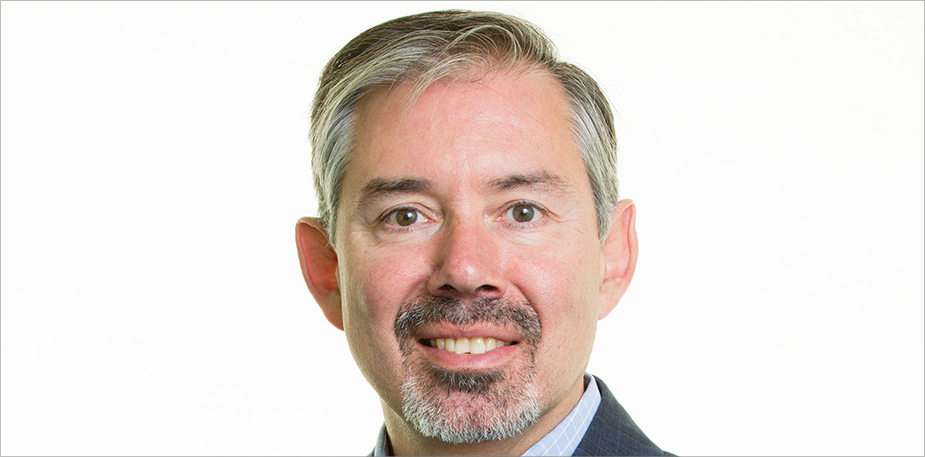06 May 2021
New president Pierre Julien wants to build up support for CIM and promote the high-tech nature of the industry
By Carolyn Gruske
Pierre Julien is the type of person who is undaunted in the face of difficult situations and meets challenges head on. Julien is the vice-president of DRA Global, but in the past has served as president of Outokumpu Technology North America (now Outotec), founder of both Lincoln Strategic and ORE+PROS, president and CEO of Norcast, and founding director of the junior miner Temple Gold. Now, as the president of CIM for the 2021-2022 year, he has the opportunity to once again prove that he is ready to tackle a difficult situation: guiding the institute, and by extension, the Canadian mining industry, as it recovers from the topsy-turvy pandemic world and heads into a future shaped by the lasting effects of COVID-19.
CIM: How did you get involved in the mining industry?
Julien: I’m from a little town in northern Ontario – that sounds like a Neil Young song – called Haileybury, and that’s the home town of the Haileybury School of Mines. When I was graduating from high school, I really didn’t have any other options. I didn’t have money to go anywhere else, so I applied to the Haileybury School of Mines. Actually, I wasn’t accepted at first.
CIM: How did you get in?
Julien: Because I didn’t have any other options, I got on my bike, and I pedalled to the school and went into the offices. I didn’t know what a dean of a college was so I asked, “Who’s the boss around here?” And they said “That’s Dean [Jack] Frey.” I said, “I’ve applied here and you guys turned me down. I’d like to talk to him.” The receptionist said, “He’s not here today, but you can come and see him on Thursday.” She set up an appointment. I went in and saw him and we had a chat, and I guess I convinced him to give me shot. About a week later, I received an acceptance letter.
He was a real tough guy, but I’m forever grateful to Dean Frey for giving me that opportunity, because 35 years later, I’ve had a exciting career. I saw the world and if he hadn’t given me that chance, I would have done something, but it probably wouldn’t have been mining.
CIM: When you graduated, what was your first job?
Julien: I worked for a company called Ramsey Engineering. Ramsey Engineering was a supplier of material handling and process control systems to the mining industry. Two weeks after starting with them, they put me on a flight to Labrador City. This was in 1985, I was 20 years old. They said, “You’ve got to go out and do a start-up on a major installation.” I said, “Great.” I’d never been out of the province, I’d never been on an airplane, I’d never met a Newfoundlander.
Years later, when I was talking to the president [of Ramsey], who I got to know very well, I said, “You guys must have been smoking dope putting me on a plane, 20 years old, sending me out to Labrador City to perform a major start-up. I don’t know what you guys were thinking.” There was such a large piece of equipment, the whole mine was shut down. He said, “That was our management methodology back then. Throw them to the sharks. If they come out alive, they’re good and if they don’t, well, so be it.” It worked. I ended up spending the better part of the next year and a half in Labrador City, doing various projects there. That’s how I got into the mining industry.
CIM: Given your broad perspective, what are the top two or three issues facing the mining industry right now?
Julien: One is the availability of talent. Globally, there’s a huge talent deficit. In order to bring the projects online that need to be brought online just to maintain the supply of minerals and metals that the world needs, we don’t have enough talent coming into the industry. That’s certainly one of our main issues. And that’s an issue for our company globally.
I guess one of the other key issues would be the one that everyone talks about: the need for sustainability. First, we need breakdown this term into subcategories as it means so many different things to so many different people. One of the things that will be important to the industry is the ability for mining companies to differentiate its metal products on multiple metrics related to sustainability (including carbon footprint and water consumption), diversity, employee well-being – human resources practices, if you will – and that will be supported by block chain.
To give you an example, in today’s world it’s $4 a pound for copper. It doesn’t matter how you produced it or where it came from. It doesn’t matter how much water or energy was consumed. It doesn’t matter if it was produced using top-quartile safety standards or bottom-quartile safety standards. Copper companies are price takers. They have to take the price that the market sets. There’s no way for them to differentiate their product and seek a premium price on the basis of different metrics.
I think block chain will drive a substantial change in our industry. It will support the differentiation of those products. Now, very much like industrial minerals producers who sell their product based on quality metrics, copper, gold and nickel producers will be able to differentiate their products based on sustainability metrics. If you want a product that’s been developed with a low carbon footprint and low water intensity, you can buy that copper. If you want a copper that’s been produced in an environment that’s worker friendly with good metrics for employee well-being, you can buy that copper. That will create competition and drive everyone to a higher standard.
That ability to differentiate these products is an issue that is in front of us and that we need to actually solve. If we really want to drive improvements, we can create regulations and rules to do it, but we will be much more successful if minerals and metals companies are able get price premiums for doing the right things. However, there will be unintended consequences to differentiated products and increased competition. People always say the mining industry is very collaborative. Everybody goes to CIM and CMP and Metsoc and shares their ideas, and shares their best practices. There’s a macro-economic reason they do that. When you’re a price taker, your primary goal is to reduce your costs. You’re incentivized as an industry to share best practices to drive your cost down, because that’s what you need to do. Once you start differentiating your products and obtaining premium prices, you now have competition. That will remove some of the reward for collaborating The evidence of that is seen in industrial minerals, where industrial minerals producers do not typically go to conferences and share their best practices. They keep those very secretive.
CIM: You mentioned CIM, you mentioned Metsoc. How long have you been involved in CIM?
Julien: I’ve been involved informally since I went to my first CMP conference in 1987. But I’ve been involved formally since 1995. Starting with CMP in Toronto. The CMP chapter in Toronto had fallen on tough times. A friend of mine, Greg Romain, called me up and said, “Pierre, do you want to help me revive the chapter?” They had about 300 bucks in the account and so we went out and raised some money. We kind of relaunched the Toronto chapter. I became involved heavily with Toronto chapter. I became the chair of the Toronto chapter at one point. Then, I got involved with CMP National and the CMP executive, becoming the chair of CMP. Then I went on the CIM council, representing CMP.
CIM: You’ve been involved in these organizations for quite a long time. You’ve seen how they operate, you’ve seen what they’re able to do. What are your goals and your visions for CIM for this coming year?
Julien: CIM was embarking on a strategic planning initiative just as the pandemic hit. Thus, the planning focus quickly shifted from long-term views to short-term survival. In this past year, I’ve chaired the strategic planning committee and seen the team develop a clear and achievable plan. . Through this process we’ve extensively engaged with the mining industry, societies and members and hopefully come up with a strategic plan that addresses both the short-term revenue challenges and the longer-term requirements that our constituents have requested. My primary goal is to see that the strategic plan that we’ve developed gets executed. Thus, my role will be to support Angela and her team to implement the specific initiatives to meet our collective ambition.
There are a few critical initiatives underway. First, we need to diversify CIM’s revenue stream so that we are not as dependent on a single event – our annual conference. To this end, we need to create closer working relationships with the Canadian corporate side – the mining company side of the industry. One thing that we realized is that although we have all these great programs that serve the industry, the industry is not fully aware of these programs.
The patron funding program was an initiative where essentially a handful of us contacted mining company executives and presented to them all the great and wonderful things CIM does. Most of them went, “Wow, we didn’t really know you did all of those great and wonderful things. We certainly want to support CIM.” And they did. They spoke with their pocketbooks and now we need to continue that engagement with them.
The second one is community engagement – both in general but most importantly with the students. Not just the students that have already come into mining, but how do we get those students in those small communities who were Pierre Julien in 1984? How do we get them into mining? And not just because they don’t have any money to go anywhere else, but have them become interested in coming into the mining industry because it’s an exciting, technology-rich and innovative industry.
Finally, I want to see the continued growth of CIM’s involvement in the development of industry guidelines and best practices. Canada has led the world in this area and it’s incredibly important that CIM continues to facilitate this process.
CIM: Do you have any ideas for how to engage students, or how to entice them into the industry?
Julien: There’s no simple fix. There are many industry organizations that have student engagement initiavites underway; however, they are mostly being run independently. I believe it may be productive for the various industry organizations to come together and come up with a more collaborative approach. This is an area that I hope to explore further.
There are also larger structural issues relating to the location of mining schools and related programs. Schools like the Haileybury School of Mines traditionally offered students a local option for mining-related programs. Now, most of the mining programs are in big cities, usually a long distance away from the small mining communities. These programs, these schools, need to be in the community. We need to take the programs to the communities, and maybe the pandemic has accelerated our ability to do this. The best way to pull people from northern Quebec, northern Saskatchewan, northern Ontario communities into the mining industry is to provide them with an opportunity – not just university, because university is a big ask – and to deliver Cambrian College and Haileybury School of Mines programs to those northern communities through a combination of remote and local learning.
CIM: What are the biggest challenges that organizations like CIM face?
Julien: I think the challenges CIM faces are the same that the mining industry faces. And it’s how do we make mining a high-tech industry that’s attractive to kids who are sitting in front of the computer, playing exciting video games? How do we make CIM relevant to the industry and to technical professionals?
We need to change the face of mining. Part of it is people in the industry going into our schools and speaking to them. We have some of the most incredible technologies: look at airborne geophysics and the technology of flying helicopters over the earth and being able to read what’s hidden underground. These are incredible imaging technologies that are comparable to what’s used in medicine to view in the human body. The most powerful machines in the world are mining shovels, trucks and grinding mills. They’re very complex to build, they’re very complex to manage. And on the processing side, we have extremely sophisticated software that uses AI and virtual reality, but we’re still seen as the people on the Discovery Channel show Gold Rush who blast riverbanks in the Yukon. That’s what people think of. We need to change that image and I’m not going to say that can be done in a year. We need to set ourselves on a path to do that.
CIM: Are there any small changes you’d like to see at CIM?
Julien: I think we – CIM itself and the employees – could be a little bit more distributed. We can move to more distributive work teams that would better represent the country. I think there’s always been a bit of a criticism of CIM as being a Montreal-based organization. And I think we can open our window to potential employees now beyond Montreal. We’d obviously still have the core in Montreal, but I think this is an opportunity to open things up.
 - dev.png)


